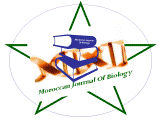Mohamed Bnouham 1 *, Fatima Zahra Merhfour 1 , Mostafa Elachoui 1 , Abdelkhaleq Legssyer 1 , Hassane Mekhfi 1 , Driss Lamnaouer 2 & Abderrahim Ziyyat 1
1 Laboratoire de Physiologie et Ethnopharmacologie. Département de Biologie. Faculté des Sciences. Université Mohamed I er . B.P. 717 - Oujda, Morocco. Tel: ++21267627496. Fax: ++2123650 06 03
2 Institut Agronomique et Veterinaire Hassan II, Departement de Pharmacie Toxicologie et Biochimie, Rabat- Instituts, Maroc .
Abstract
Phytoremedies are becoming mainstream worldwide; the increasing of these medicinal approaches is due to the recognition of the value of traditional medicine and indigenous pharmacopoeia. Although medicinal plants are often promoted as natural and therefore harmless, they are not free from adverse effects. The potential toxicity of herbal medicine is not new. In several countries, where herbal medicines are commonly used, it is well known that some plants must used with caution because the adverse reaction can be caused inherently by toxic herbs, by herbs overdoses, or by drug-drug interaction, thus, especially other adverse reaction can be due to quality problems such as adulteration caused by manufacturing, misidentification, substitution of one herbs for an others, improper processing of preparation and use, etc…
The present study reviews the cases of some plants commonly used by Moroccan people in traditional medicine and reported as highly toxic. Twenty eight plants are selected dangerous for health; these toxic species belonging to 16 families have been repertoried. The families reported to be most representative of these kinds of plants are Solanaceae (7 species). All physiological functions can be affected by the toxicity of plants. However, the highly toxic plants reviewed are those which produce irreversible health injury, serious aftermath, and irreversible damage such as renal failure, liver damage, hemiplegia, blindness…etc and sometimes they can produce the death. The plants that have been reported to produce the sever damages are: Aconitum vulparia Rchb., Anagyris foetida L., Atractylis gummifera L. , Bryonia dioica Jacq, Chenopodium album L., Colchicum autumnale L., Conium maculatum L., Daphne gnidium L., Daphne laureola L., Ferula communis L, Hyosciamus niger L., Mandragora autumnalis Bertol, Nerium oleander L., Ricinus communis L., Solanum nigrum L., Tamus communis L. and Thapsia garganica L.
The review indicates the scientific name of the plant (family and specie), the vernacular name, the part used, the LD50 (lethal dose 50) and summarized the most relevant toxicological investigations. The products carrying the toxicity of the plants and the acute toxicity have been mentioned. The great part of these toxic drugs belongs to the alkaloid class.
Key words: Toxic plants, Active components, Toxicity, Traditional medicine.
 Moroccan Journal Of Biology. ISSN : 1114-8756
Moroccan Journal Of Biology. ISSN : 1114-8756